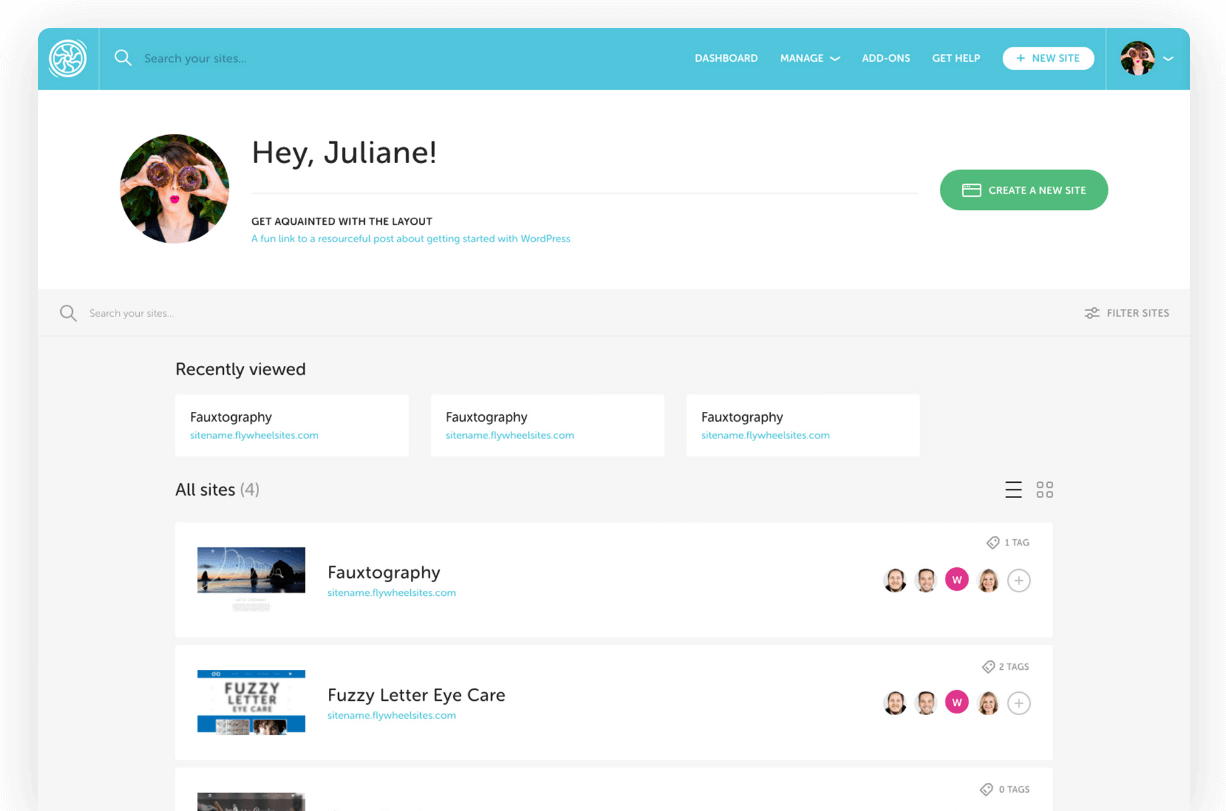Point GoDaddy DNS to Flywheel
Domains registered with GoDaddy can take advantage of Flywheel’s partnership with Domain Connect, which allows Flywheel to set up DNS records with GoDaddy on your behalf. If you’d like to point your domain manually instead, follow these instructions after adding the domain to your Flywheel site.
Note
This article is for customers who have purchased domains that are managed by GoDaddy. We have a general help tutorial as well as instructions for other domain providers here.If you’re brand new to the world of domain names, some of the terminology may seem a little confusing. If you ever feel stuck, feel free to reference our Glossary of DNS terms.
Warning
For security best practices, we recommend not pointing a wildcard entry directly to a Flywheel IP address, but instead to point any subdomain independently. The use of wildcard records may open your domain up to additional subdomains being created without your permission.Table of Contents:
Step 1: Add the domain to your Flywheel site
- From the site’s Overview tab, go to the Domains section and click the + Add Domain button to add the domain you’d like to point to Flywheel.
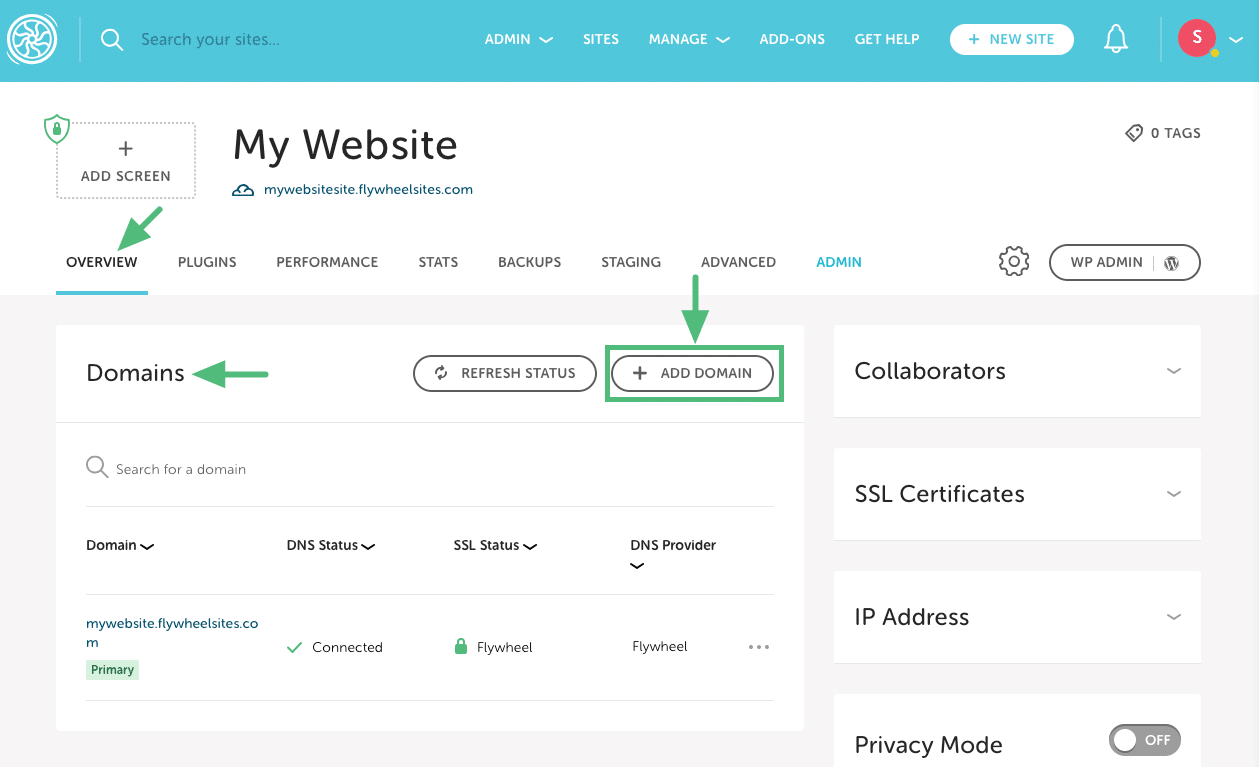
- Next, fill out the domain information as described below.

1. Domain: Enter the URL (without a prefix). Example: mywebsite.com
2. Primary domain: Check the box if you want this to be your primary domain (if this will be your site’s main URL).
3. www: By default, the www version of the domain will be added, but you can uncheck the box to skip this step if needed. Example: www.mywebsite.com.Then click Next.
Note
In the background, our system will automatically update all appropriate URL references in the database to this new primary domain. - Click to copy your new DNS records to your clipboard. We recommend keeping this tab open so you can easily copy them from here and paste them into the DNS editor.

You will need to copy all the records you see in the table. For example:
• A record (This is your Flywheel site’s IP address)
• CNAME record (The CNAME record is only required if you’re adding the “www” version of your domain. If you’re not, the CNAME isn’t required and won’t be displayed in the list.)
• TXT record
Note
If you’d like to update the DNS manually follow these instructions.Step 2: Log in to GoDaddy and authorize changes
- Click the Login to GoDaddy button, which will take you to your GoDaddy dashboard to sign in.
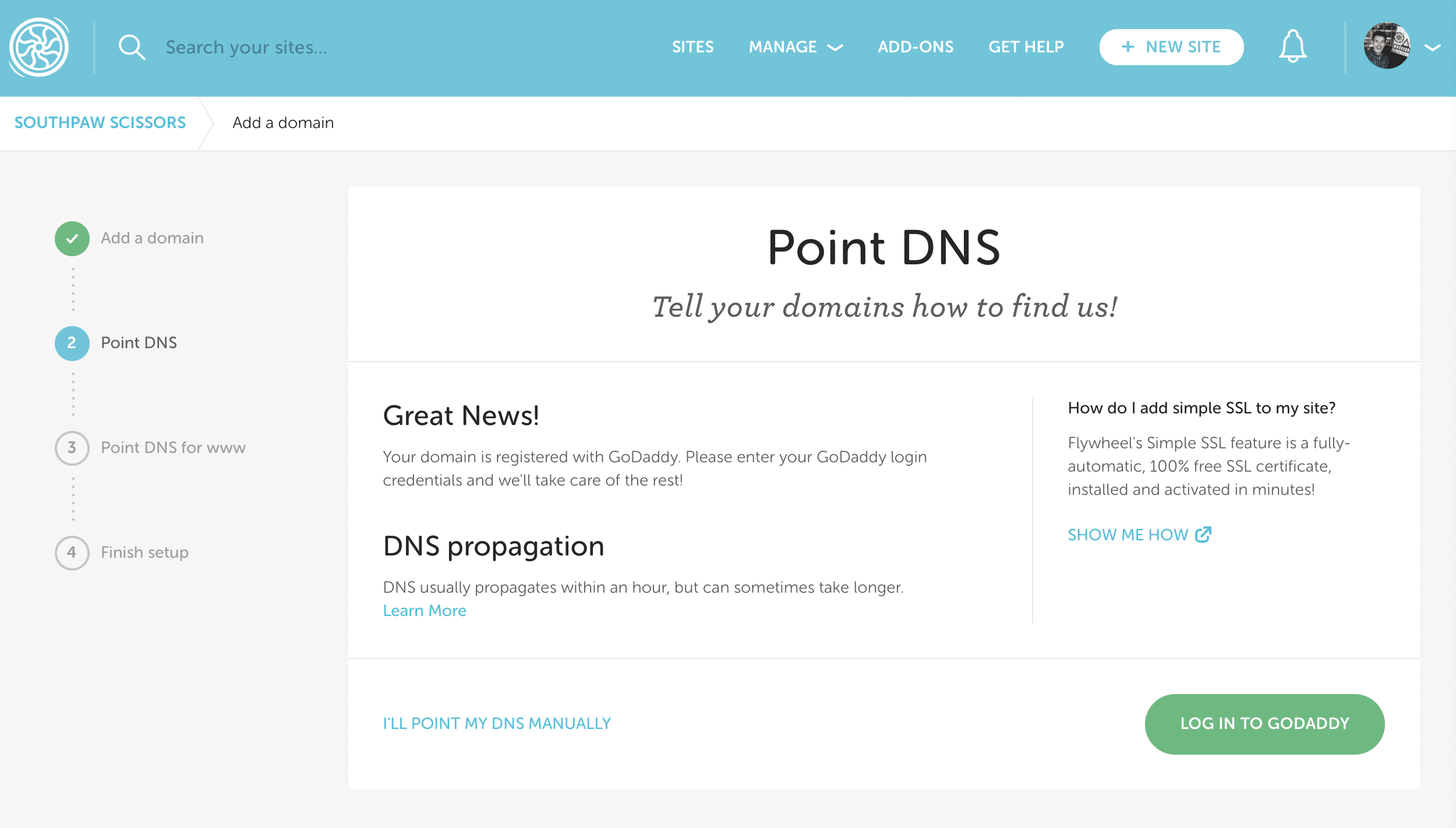
- Once you’re signed in, click Connect to authorize Flywheel to make DNS changes.

- If the
wwwversion of your domain was added as well, click Point www in GoDaddy to authorize changes for this subdomain.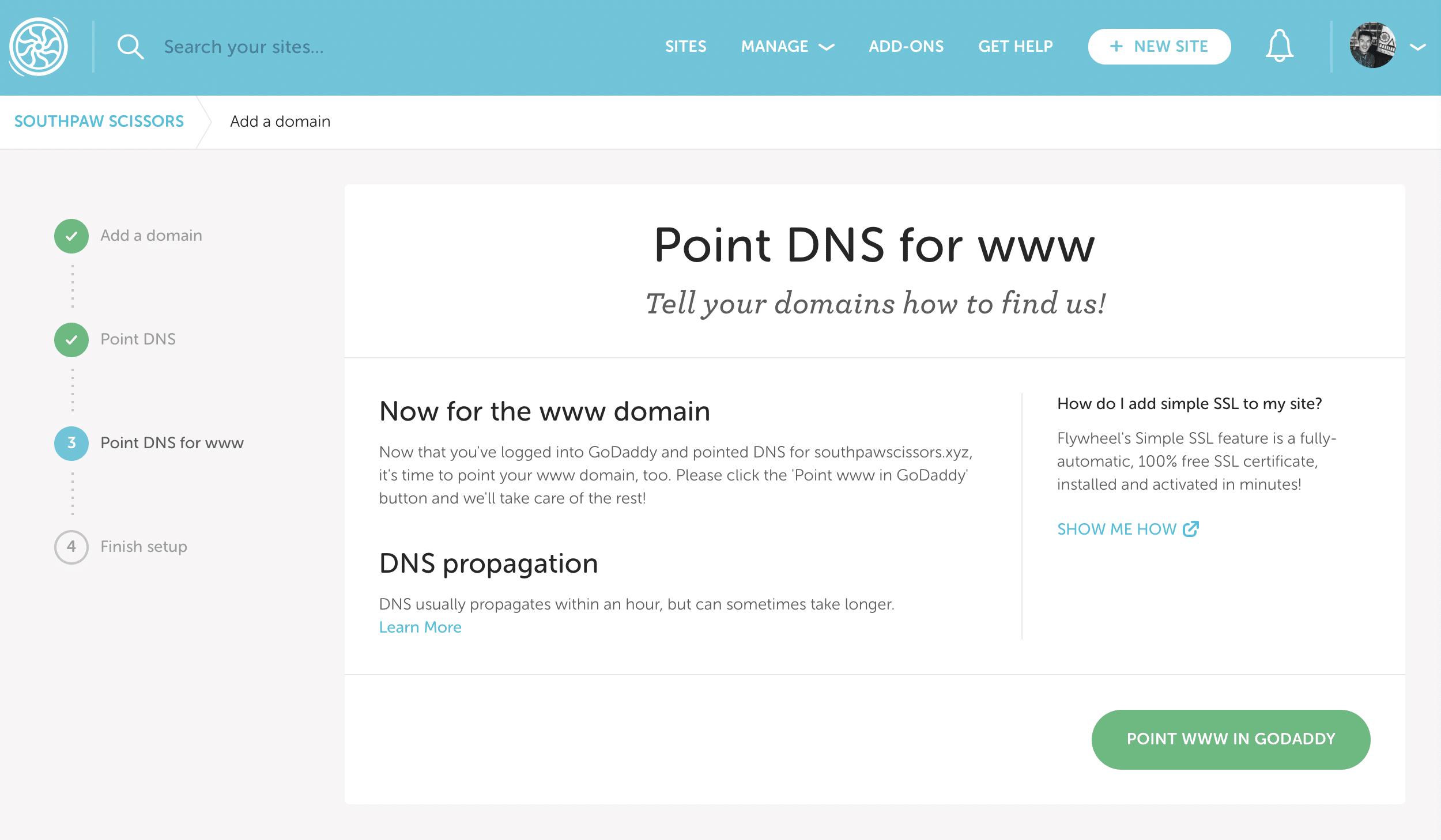
Step 3: Complete the domain setup
- Once DNS is updated at GoDaddy, you’ll be taken back to the Flywheel dashboard. Click Back to Site to return to the Overview page.

- Repeat the steps above (leaving Primary unchecked) to add any secondary domains.
Manually point DNS
- First, add the domain to your Flywheel site.
- In a separate tab, log in to the GoDaddy administration panel.
- On the My Products page, locate the domain you want to point to Flywheel.
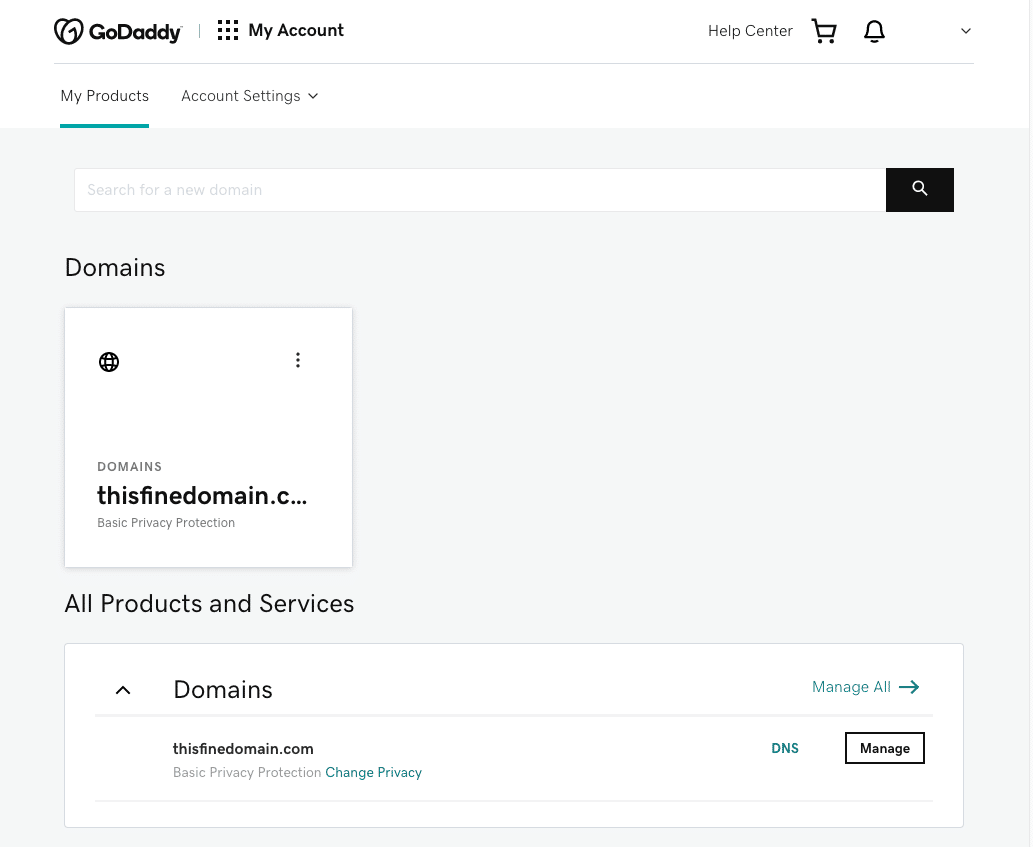
- Click the DNS button.

Edit the current A record
There’s a good chance you’ll see several records on the DNS page, especially if your domain was pointed to a different host previously. For now, we’re just going to be concerned with the A record, since it’s the record responsible for pointing your domain to your website.
Be careful about modifying or deleting any other records – especially MX records, which are responsible for email. Also, it never hurts to take a screenshot before you start making changes.
- Locate the A Record.
- Edit the A Record by clicking the pencil icon.

- Set Host to @

Note: The @ symbol serves as a placeholder for the root level domain. In this case, it stands for thisfinedomain.com. - Enter your IP address under Points To. In this example, the IP is 151.101.66.159.
- Usually, there’s no need to adjust TTL, which stands for Time To Live. For more information on TTL, check out this help article: DNS: What is TTL?
- Click Save to apply the changes.
Unless you have a subdomain setup, for example shop.thisfinedomain.com, you should only need one A record value. At the very least, make sure that you have one A record with @ set as the host which is pointing to your Flywheel IP address.
For more information, visit GoDaddy’s help article on creating/updating A records.
Optional: Configure CNAME record for www
We recommend you also set a CNAME record in your zone file to allow the use of the www prefix. A CNAME (aka canonical name) points a subdomain to another domain name.
For example, with a CNAME in place, visitors entering www.thisfinedomain.com in their browser will be re-routed to thisfinedomain.com. Without a CNAME record, visitors will instead reach an error page.
- Click Add under the Records table.
- Under Type, select CNAME.
- Enter www under Host.
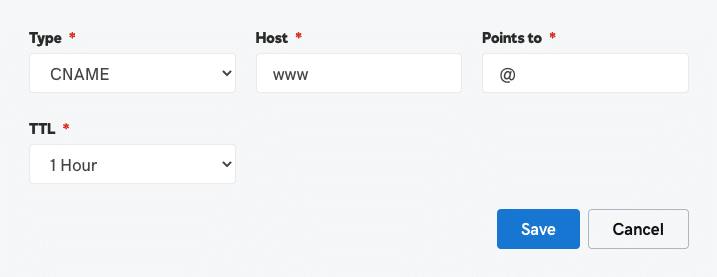
- Enter @ under Points to.
- Click Save to apply the changes.
For more information, visit GoDaddy’s help article on creating CNAME records.
Add a TXT record
The TXT (or Text) record is used to verify that you own and control your domain, and prevents unauthorized use of your domain.
Add the following information:
- Name: Paste the host/label text string from your Flywheel DNS details.
- Value: Paste the destination/target text string from your Flywheel DNS details.
- TTL: Leave this on the default setting.
For more information, visit Godaddy’s help article on TXT records.
Confirm your changes using Flywheel’s DNS checker
After a short propagation window, your site should be connected to Flywheel! You can use our built-in DNS checker to confirm your settings.
1. Go to your site’s Overview tab on the Flywheel dashboard.
2. Click Refresh Status in the Domains section.
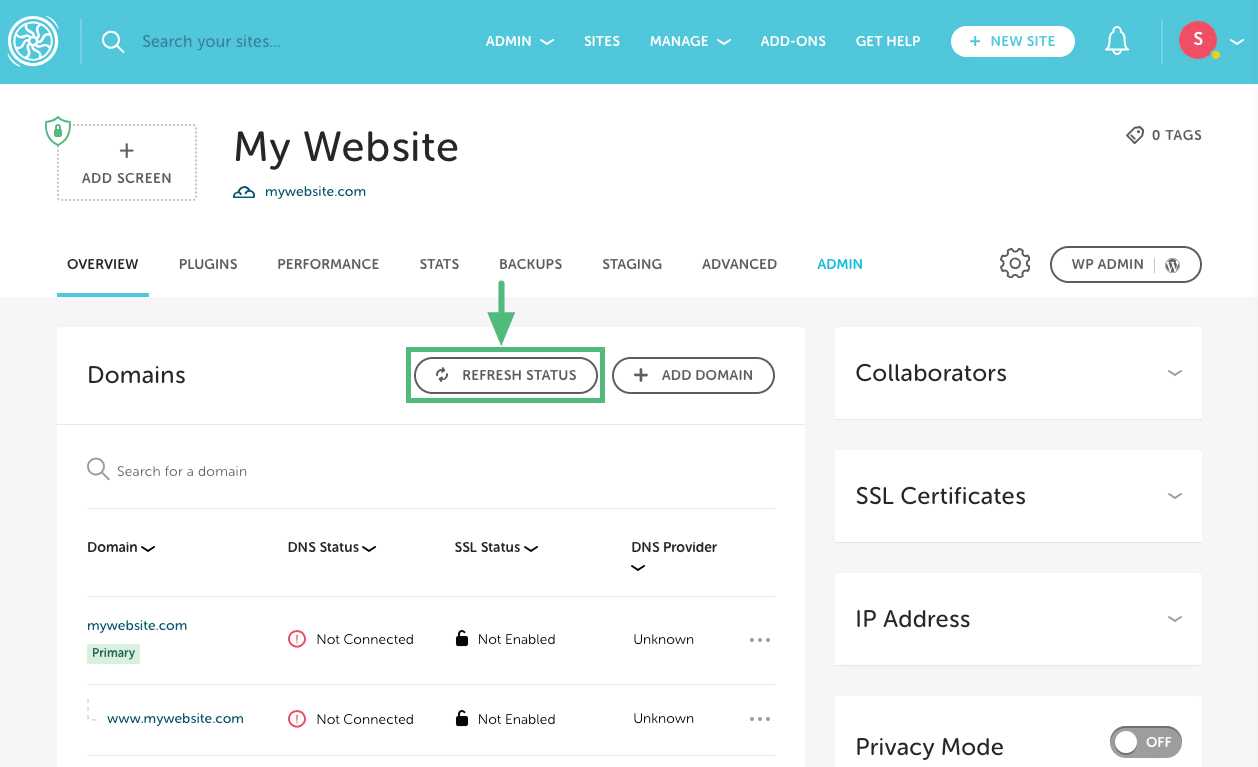
Once your site is pointed to Flywheel, the status will switch to ✅ Connected and the domain registrar will be displayed as well.
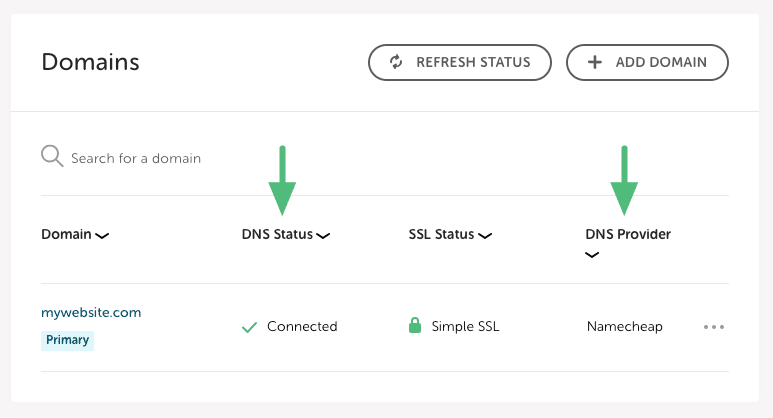
FAQ
My domain is registered through GoDaddy, but Domain Connect isn’t working. What do I do?
If you run into any snags, it’s a good idea to double-check the following first:
- Make sure you complete the entire process. After you log in to GoDaddy and approve the DNS changes, you should be taken back to the Flywheel dashboard and see a “Success! Your domain is now connected to Flywheel.” message. If that doesn’t sound familiar, try adding your domain again.
- Make sure you log in to the correct GoDaddy account. If not, you’ll be unable to authorize the changes.
- Make sure you’re using GoDaddy’s nameservers. If you have custom nameservers specified, Flywheel will not be able to make changes. You can view and edit your domain’s name servers by following this GoDaddy help article.
- Make sure your GoDaddy domain contains a CNAME record for
_domainconnect. If not, you can create one using the settings pictured below. If this CNAME record is missing, Flywheel will not be able to connect with GoDaddy.
I pointed the domain successfully, but my site isn’t loading in my browser. What do I need to do?
Most likely, you just need to wait a few minutes, as there is a delay between the time DNS changes are made and when they go into effect. This is known as propagation time.
DNS changes by nature can take 24-48 hours to fully update across the entire internet, though it’s generally much quicker. By default, GoDaddy sets the Time to Live (TTL) setting for each record to 1 hour, so you should see your changes go live within that timeframe.
Need help?
If you have any questions our Happiness Engineers are here to help!
Getting Started
New to Flywheel? Start here, we've got all the information you'll need to get started and launch your first site!
View all
Account Management
Learn all about managing your Flywheel user account, Teams and integrations.
View all
Features
Flywheel hosting plans include a ton of great features. Learn about how to get a free SSL certificate, set up a staging site, and more!
View all
Platform Info
All the server and setting info you'll need to help you get the most out of your Flywheel hosting plan!
View all
Site Management
Tips and tricks for managing your sites on Flywheel, including going live, troubleshooting issues and migrating or cloning sites.
View all
Growth Suite
Learn more about Growth Suite, our all-in-one solution for freelancers and agencies to grow more quickly and predictably.
Getting started with Growth Suite
Growth Suite: What are invoice statuses?
Growth Suite: What do client emails look like?

Managed Plugin Updates
Learn more about Managed Plugin Updates, and how you can keep your sites up to date, and extra safe.
-
Restoring Plugin and Theme Management on Flywheel
-
Managed Plugin Updates: Database upgrades
-
Managed Plugin Updates: Pause plugin updates

Local
View the Local help docs
Looking for a logo?
We can help! Check out our Brand Resources page for links to all of our brand assets.
Brand Resources All help articles
All help articles